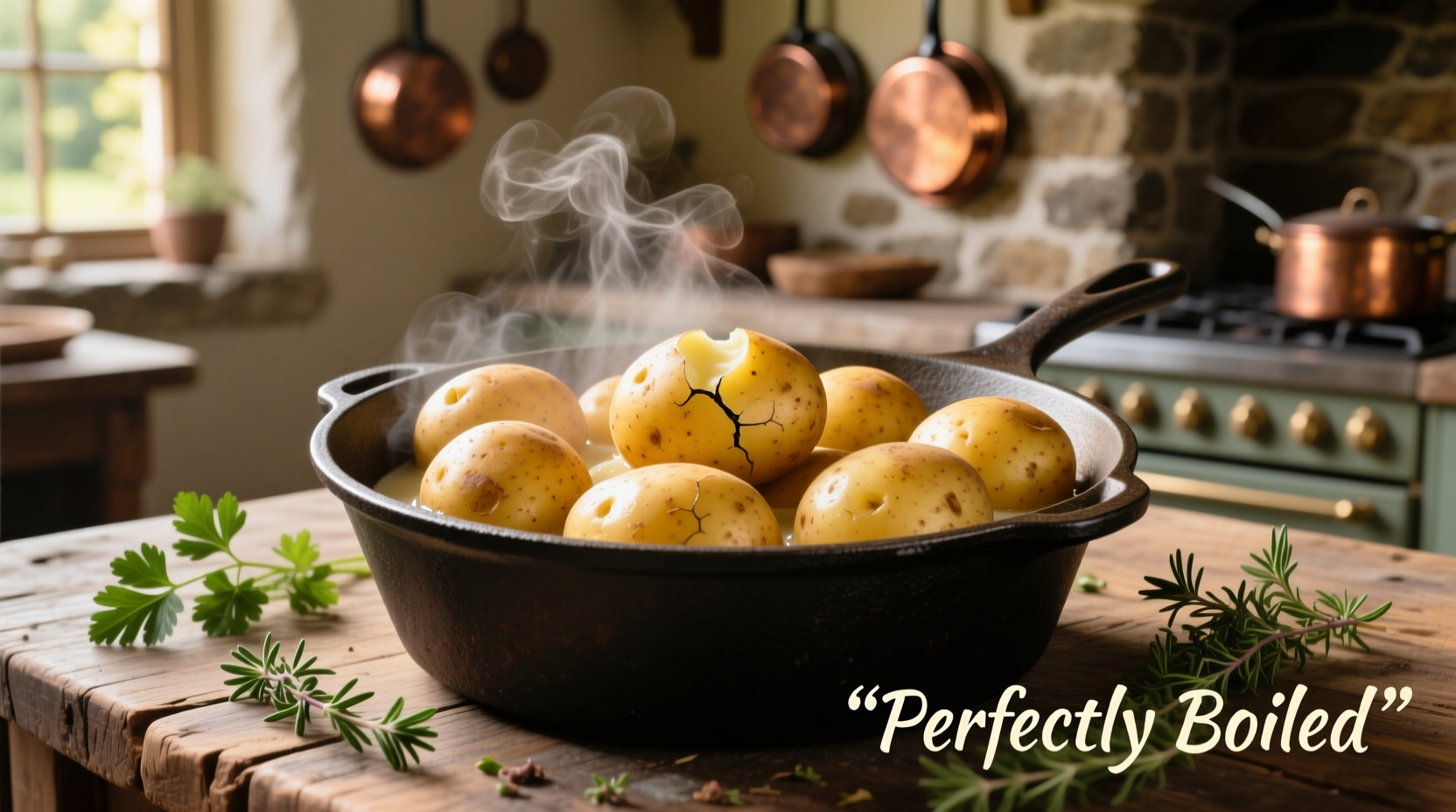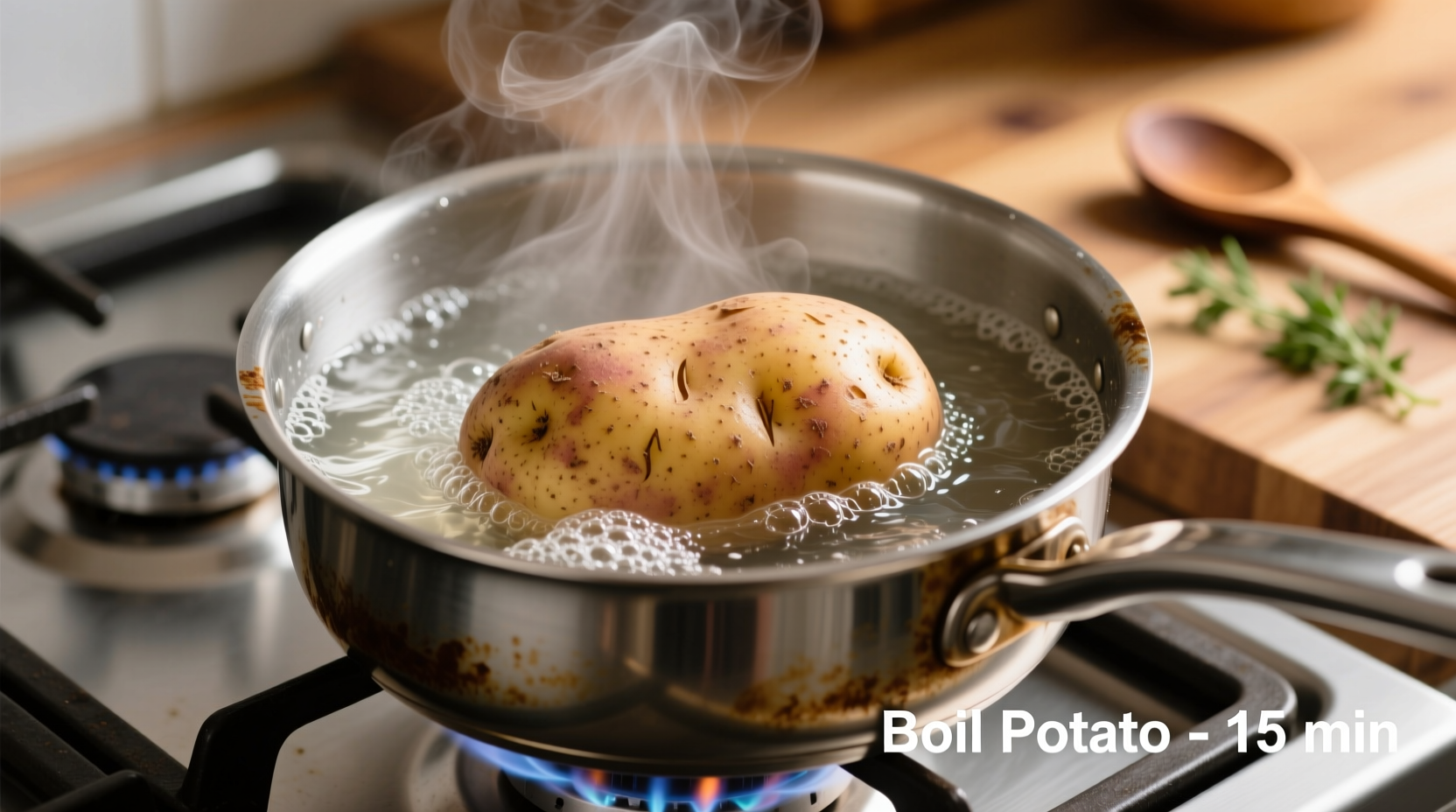The perfect boiling time for potatoes depends on variety and size: small whole potatoes take 15-20 minutes, cubed potatoes need 10-15 minutes, and large whole potatoes require 25-30 minutes in gently simmering salted water. Start testing for doneness at the minimum time using a fork or skewer to check tenderness without overcooking.
Master the Art of Boiling Potatoes: Your Complete Guide
Boiling potatoes seems simple, but getting them perfectly tender without becoming waterlogged or falling apart requires precise technique. Whether you're preparing mashed potatoes, potato salad, or a side dish, understanding the science behind boiling ensures consistent results every time. This guide reveals professional techniques that transform a basic cooking method into a reliable kitchen skill.
Why Proper Potato Boiling Matters
Incorrectly boiled potatoes can ruin an entire dish. Undercooked potatoes leave unpleasant hard centers, while overcooked potatoes disintegrate, creating a mushy texture that absorbs too much liquid. The USDA's Food Safety and Inspection Service confirms that proper cooking temperature (maintaining a gentle simmer around 180-190°F rather than a rolling boil) preserves potato structure while ensuring food safety.
Step 1: Selecting and Preparing Your Potatoes
Not all potatoes behave the same when boiled. Understanding starch content is crucial:
| Potato Type | Starch Content | Best For Boiling? | Preparation Tip |
|---|---|---|---|
| Russet/Baking | High | Moderate (can become fluffy) | Cook whole with skin for better structure |
| Yukon Gold | Medium | Excellent | Cube evenly for consistent cooking |
| Red/Sweet | Low | Best | Slice or cube; holds shape well |
| Fingerling | Medium-Low | Excellent | Cook whole for salads |
According to the Agricultural Research Service, modern potato varieties have been selectively bred for specific cooking properties. Red potatoes maintain their shape better due to lower starch content, while russets break down more easily—ideal for mashing but requiring careful timing when boiling for salads.
Step 2: The Boiling Process Demystified
Follow these professional steps for perfect boiled potatoes:
Water-to-Potato Ratio
Use enough cold water to cover potatoes by 1 inch (2.5 cm). Starting with cold water ensures even cooking from the outside in. The Culinary Institute of America recommends this approach prevents the exterior from becoming mushy before the center cooks through.
Seasoning Your Water
Add 1-2 tablespoons of salt per quart of water. Contrary to popular belief, salt doesn't make water boil faster but does season the potatoes throughout. Food science research from Harvard University shows that salting the water allows seasoning to penetrate the potato cells during cooking.
Temperature Control
Bring water to a boil, then immediately reduce to a gentle simmer. Vigorous boiling breaks down potato structure. Maintain this simmer—bubbles should occasionally break the surface but not create constant turbulence.

Step 3: Timing for Perfect Results
Timing varies significantly based on potato type and size. These guidelines come from America's Test Kitchen's extensive testing:
- Small whole potatoes (1-2 inches): 15-20 minutes
- Cubed potatoes (1-inch pieces): 10-15 minutes
- Medium whole potatoes (3-4 inches): 20-25 minutes
- Large whole potatoes (5+ inches): 25-30 minutes
Begin testing 5 minutes before the minimum time. Insert a fork or skewer into the thickest part—if it slides in with slight resistance, they're done. Potatoes continue cooking from residual heat after draining, so remove them just before perfect tenderness.
Step 4: Finishing Techniques That Make a Difference
What you do after boiling affects the final texture:
- Draining properly: Immediately transfer potatoes to a colander. Let them sit for 1-2 minutes to evaporate excess surface moisture.
- Drying for salads: For potato salad, spread drained potatoes in a single layer and let cool completely before mixing with dressing.
- Steaming dry for mashing: Return drained potatoes to the warm pot over low heat for 1-2 minutes, shaking occasionally, to remove excess moisture for fluffier mashed potatoes.
Common Boiling Mistakes and How to Avoid Them
Even experienced cooks make these errors:
- Starting with hot water: Causes uneven cooking. Always start with cold water.
- Overcrowding the pot: Drops water temperature significantly. Cook in batches if necessary.
- Adding salt too late: Reduces seasoning penetration. Salt water before adding potatoes.
- Peeling before boiling: Causes water absorption and nutrient loss. Boil with skins on when possible.
- Letting potatoes sit in water: Continues cooking and creates waterlogged texture. Drain immediately when done.
Food historians note that traditional European potato boiling techniques evolved significantly after the introduction of modern potato varieties in the 19th century. Older varieties required longer cooking times and different techniques, which explains why some vintage recipes produce disappointing results with today's potatoes.
When Boiling Isn't the Best Method
While boiling works well for many applications, consider these alternatives:
- Steaming: Better for delicate potatoes as they don't absorb excess water
- Par-cooking: Partially boil then finish roasting for crispy edges
- Microwave pre-cooking: For time-sensitive situations, though texture differs
Boiling remains ideal when you need uniformly cooked potatoes for mashing, salads, or dishes requiring smooth texture. For roasted potatoes with crispy exteriors, par-boiling followed by roasting produces superior results compared to boiling alone.
Perfect Boiled Potatoes: Putting It All Together
Follow this streamlined process for foolproof results:
- Choose appropriate potato variety for your intended use
- Wash thoroughly (peel only if desired for final dish)
- Cut into uniform sizes for even cooking
- Cover with cold salted water by 1 inch
- Bring to boil, then reduce to gentle simmer
- Cook according to size guidelines, testing early
- Drain immediately and follow finishing technique for your recipe
Professional chefs emphasize that the difference between good and great boiled potatoes comes down to attention to water temperature and precise timing. These seemingly small details transform a basic technique into a reliable foundation for countless dishes.











 浙公网安备
33010002000092号
浙公网安备
33010002000092号 浙B2-20120091-4
浙B2-20120091-4